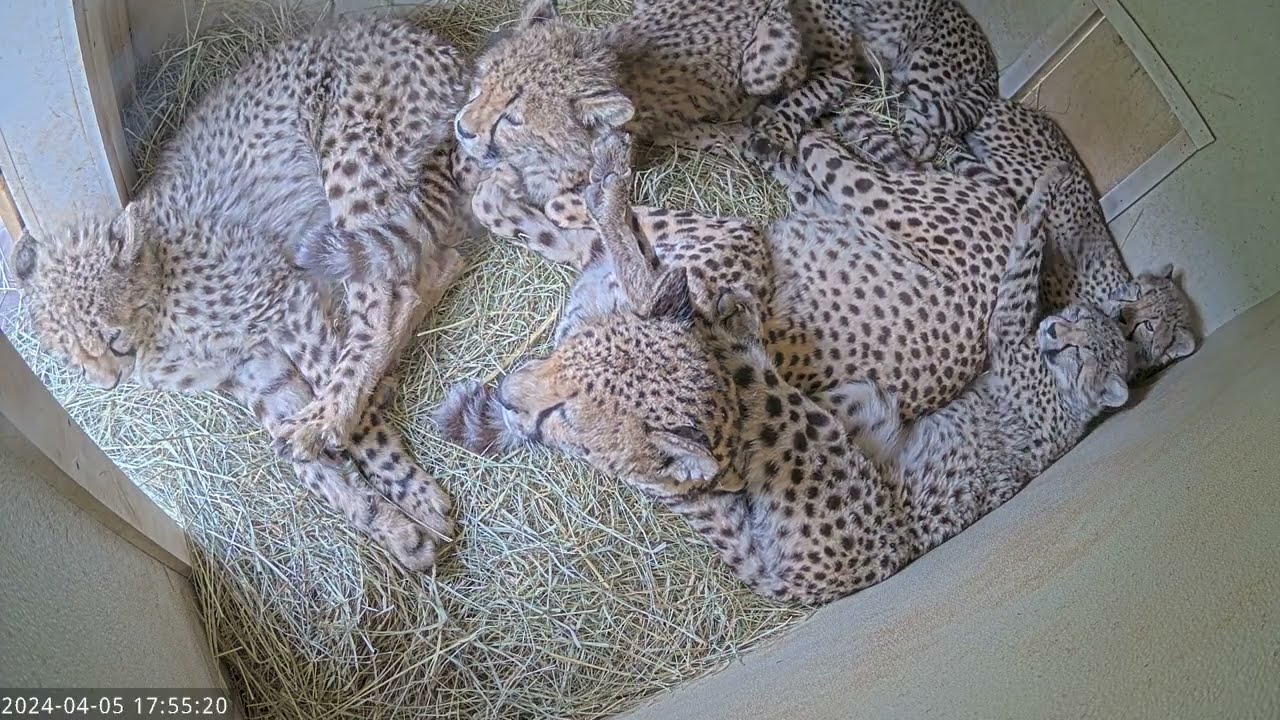– Behavioral insights from a 7-month-old cheetah cubs video
– The importance of family bonding in cheetah socialization
– Strategies for cheetah conservation in the wild and in captivity
– The role of zoos in educating the public about wildlife conservation
The tender moment captured in a recent video showing 7-month-old cheetah cubs cuddling with their mom offers more than a heartwarming scene. It provides a rare glimpse into the social behavior of these magnificent creatures and highlights the critical importance of family bonds in their development. This article will explore the behavior exhibited in the video, delve into the significance of familial ties for cheetahs, discuss the current state of cheetah conservation, and look at zoos’ role in conservation efforts and public education.
Cheetahs, known scientifically as Acinonyx jubatus, are remarkable for their speed, agility, and grace. However, these physical attributes are just part of their story. The video of the 7-month-old cheetah cubs illuminates the species’ less visible social side. At this age, cheetah cubs develop the skills necessary to survive in the wild. These include hunting techniques and understanding their place within the social hierarchy. As seen in the video, the interaction with their mother is crucial. It provides warmth and security and lessons in social interaction and group cohesion that are vital for their survival.
Family bonds are especially significant for cheetahs. Unlike solitary big cats like tigers, cheetahs sometimes form small groups, known as coalitions, to hunt and defend territories. These coalitions are often made up of brothers from the same litter. The strength of these familial ties can be critical for survival, offering increased protection and collaborative hunting advantages. The early life interactions, similar to those displayed by the 7-month-old cheetah cubs cuddling with their mother, lay the groundwork for these complex social structures.
Cheetah conservation has become increasingly vital due to declining populations due to habitat loss, human-wildlife conflict, and illegal wildlife trade. Conservation strategies often focus on habitat preservation, establishing wildlife corridors to ensure genetic diversity, and mitigating human conflicts. The intrinsic interest sparked by videos of 7-month-old cheetah cubs and their family dynamics can drive public support for these conservation efforts. Engaging the public’s interest through relatable content helps foster a connection with these distant, often abstract conservation concerns.
Zoos play a pivotal role in this process. By providing a home for cheetahs and other endangered species, they aid in conservation through breeding programs and serve as vital educational platforms. The opportunity to observe cheetahs up close, as in the scenario with the 7-month-old cubs, can inspire a profound appreciation for these animals and a deeper understanding of the need for their conservation. Educating the public about the natural behaviors and conservation status of cheetahs encourages support for conservation programs and promotes a culture of wildlife protection.
The compelling scene of 7-month-old cheetah cubs cuddling with their mom transcends its initial visual appeal. It opens a window into the complex social lives of cheetahs, underscoring the importance of family bonds in their development. This insight serves as a reminder of what is at stake in conserving these extraordinary animals. Through conservation strategies focused on preserving natural habitats and educating the public, there is hope for the future of cheetahs. Zoos play an essential role in these endeavors, acting as bridges between the public and the often remote natural habitats of these incredible creatures. The captivation and curiosity sparked by videos like that of the cheetah cubs and their mother are valuable tools in the ongoing quest to safeguard our planet’s biodiversity.
*****
Source Description
Cheetah mother Echo sleeps with her litter of five cheetah cubs at the Smithsonian National Zoo and Conservation Biology Institute’s Front Royal, Virginia facility on April 7, 2024. The animals are part of a cooperative breeding program to increase genetic diversity among the cheetah population in North America.


